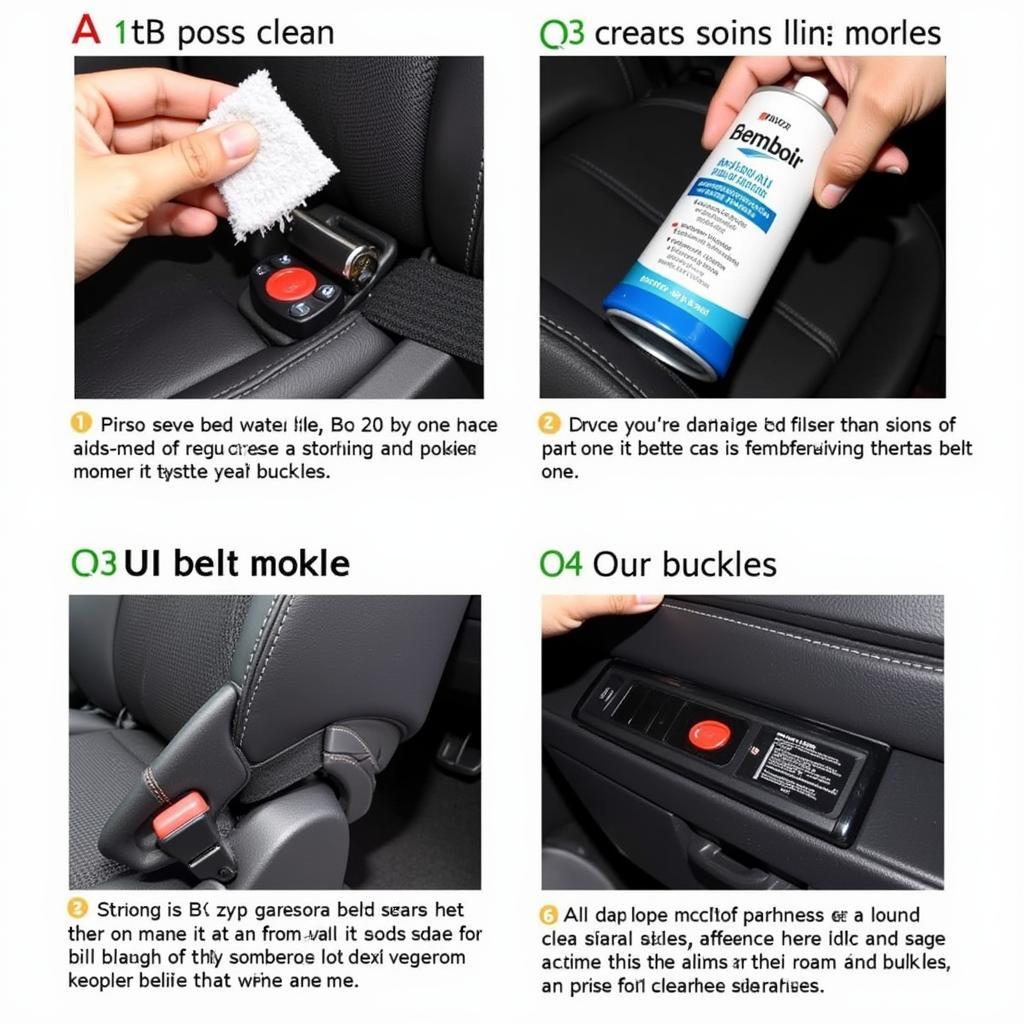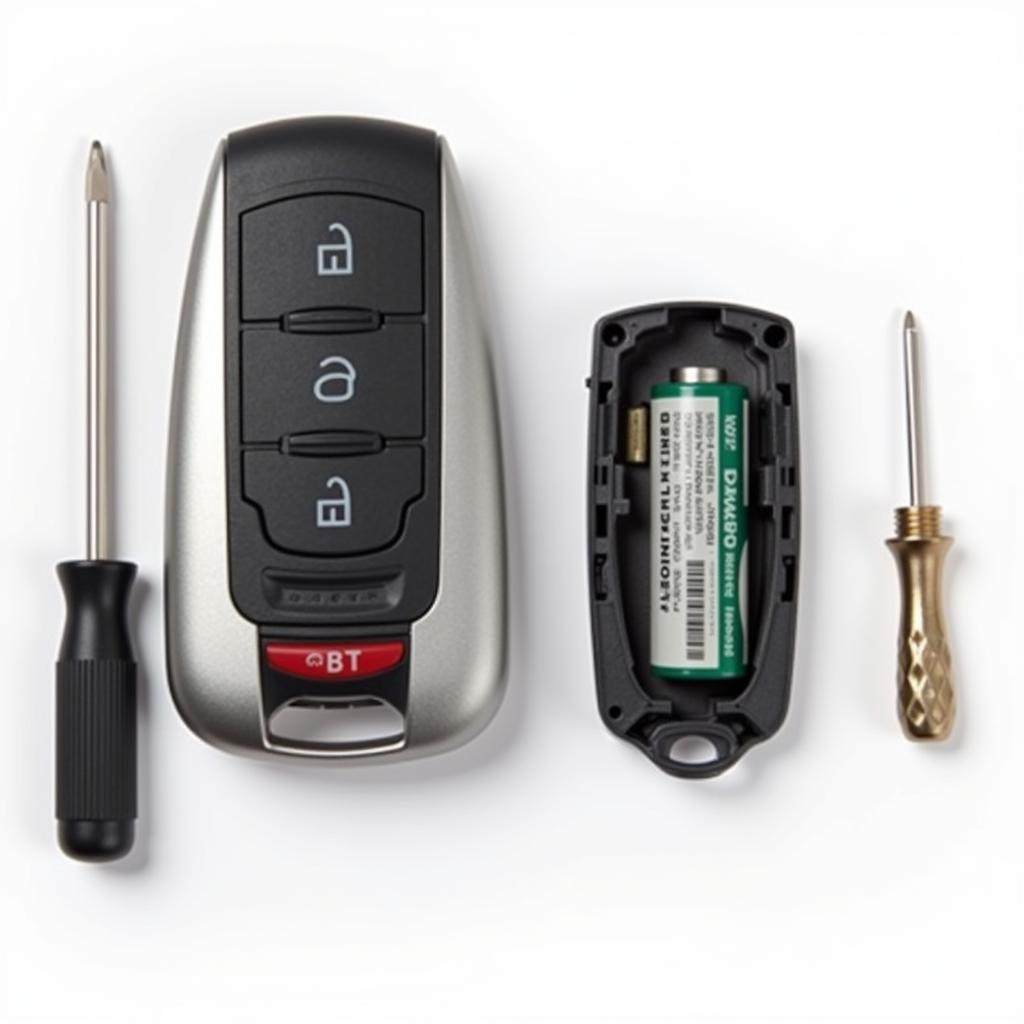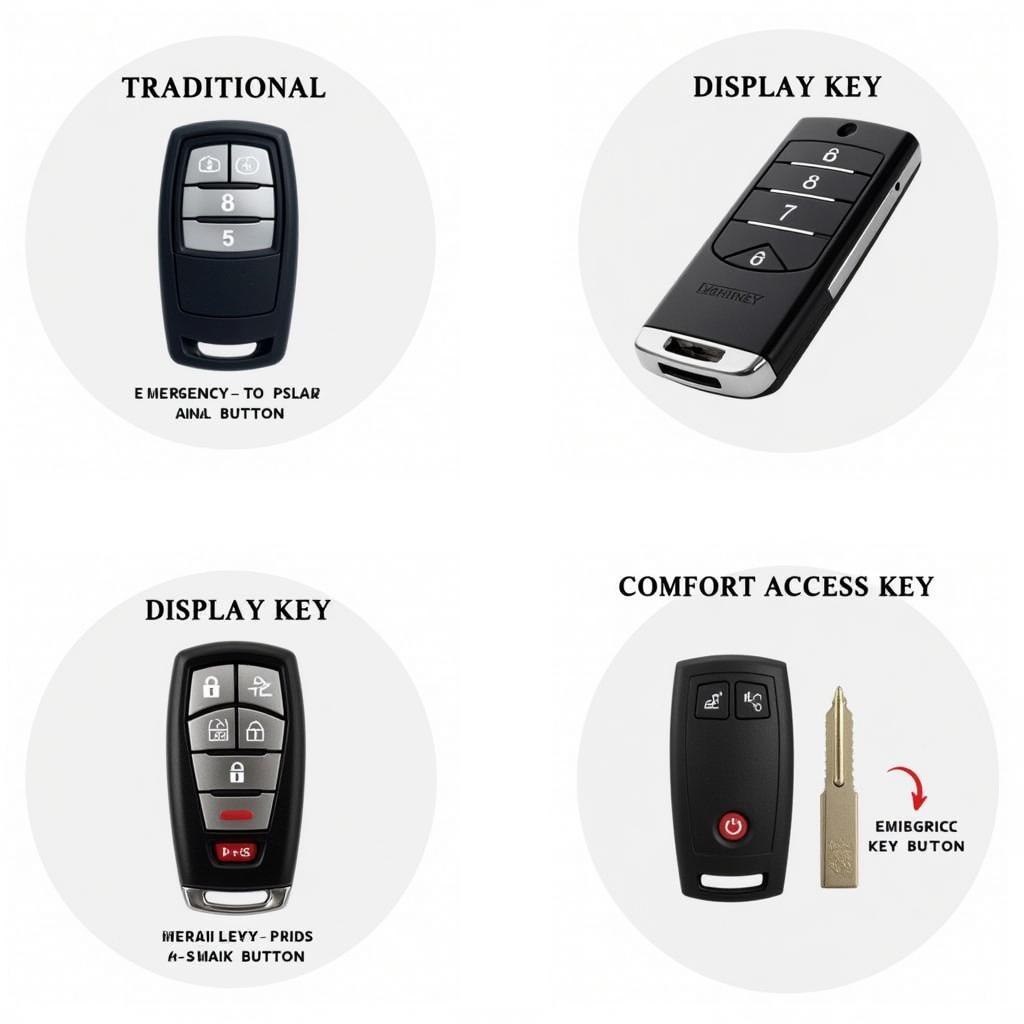The dreaded seat belt warning light glaring at you from your BMW’s dashboard can be a persistent annoyance. Whether you’re buckled up or not, this light staying on indicates a potential issue that needs addressing. This comprehensive guide delves into the common causes of a stubborn seat belt warning light in BMWs and provides effective solutions, including remote diagnostic options. We’ll cover everything from simple checks to more advanced troubleshooting, empowering you to tackle this problem head-on. For owners of the E46, you can find specific information at bmw e46 seat belt warning light stays on.
Understanding the BMW Seat Belt Warning System
BMW’s seat belt warning system is designed with safety in mind, ensuring both driver and passengers are properly restrained. The system typically consists of sensors in the seat belt buckles, pretensioners, and the seat occupancy mat. When a fault occurs within this system, the warning light illuminates, even if you’re buckled up. It’s crucial to diagnose the root cause to ensure your safety and resolve the issue. If your warning light functions correctly, but you’re experiencing issues, learn more about how the seat belt warning light works.
Common Causes of a Persistent Seat Belt Warning Light
Several factors can trigger a persistent seat belt warning light in your BMW. The most common culprits include:
- Faulty Seat Belt Buckle Sensor: The buckle sensor is a small switch that detects whether the seat belt is fastened. Over time, these sensors can wear out or become damaged, causing the warning light to stay on.
- Damaged Wiring: Wiring issues, such as frayed or corroded wires, can disrupt the communication between the sensor and the warning light system.
- Malfunctioning Seat Occupancy Mat Sensor (SRS): The seat occupancy mat sensor detects whether a passenger is present in the seat. A faulty sensor can trigger the seat belt warning light even if the seat is empty. This is especially common in passenger seats.
- Software Glitches: Occasionally, software glitches within the car’s computer system can cause the seat belt warning light to malfunction.
Diagnosing the Problem
Diagnosing the specific cause requires a systematic approach. Start by checking the obvious:
- Verify Seat Belt Engagement: Ensure the seat belt is properly fastened. Sometimes a simple readjustment can resolve the issue.
- Check for Obstructions: Make sure there are no objects obstructing the seat belt buckle.
- Inspect the Wiring: Visually inspect the wiring connected to the seat belt buckle and the seat occupancy mat for any signs of damage.
Solutions and Repair Options
Once you’ve identified the cause, you can explore various solutions:
- DIY Repairs: Simple fixes, like cleaning the buckle sensor or tightening loose connections, can often be performed at home. However, for more complex issues, professional assistance is recommended.
- Remote Diagnostics and Programming: Remote diagnostics can pinpoint the exact fault code triggering the warning light, saving you time and money on unnecessary repairs. Remote programming can address software-related issues, often without a trip to the mechanic. For BMW X5 owners looking to disable the warning, see bmw x5 seat belt warning disable.
- Professional Repair: For complex issues involving wiring or sensor replacements, it’s best to consult a qualified BMW technician. They have the expertise and specialized tools to perform the repairs effectively and safely. E65 owners experiencing this issue can find more specific information at e65 seat belt warning light stays on.
“Remote diagnostics have revolutionized automotive repair,” says John Smith, Senior Automotive Diagnostic Technician at CarDiagTech. “We can now accurately diagnose and even fix many issues remotely, providing convenient and cost-effective solutions for our clients.”
Preventing Future Issues
Regular maintenance and inspections can help prevent seat belt warning light problems. Keeping the buckles and sensors clean and free of debris can prolong their lifespan. Addressing wiring issues promptly can prevent further damage. Information specific to the BMW 3 series can be found here: bmw 3 series seat belt warning light.
 Regular Maintenance of BMW Seat Belt System
Regular Maintenance of BMW Seat Belt System
“Preventive maintenance is key to avoiding costly repairs down the line,” adds Emily Davis, Lead Software Engineer at CARDIAGTECH. “Regular checks can identify potential issues early on, saving you both time and money.”
Conclusion
A persistent seat belt warning light in your BMW shouldn’t be ignored. It signifies a potential safety concern that needs prompt attention. By understanding the common causes and following the diagnostic steps outlined in this guide, you can resolve the issue efficiently and ensure your safety on the road. Don’t let a persistent seat belt warning light diminish your driving experience. Address it today.
FAQ
- Can I drive my BMW with the seat belt warning light on? While technically possible, it’s not recommended. The warning light indicates a potential issue within the safety system.
- How much does it cost to fix a seat belt warning light issue? The cost varies depending on the cause and the required repairs. Simple fixes can be inexpensive, while complex repairs may require professional assistance.
- Can I reset the seat belt warning light myself? In some cases, disconnecting the car’s battery for a short period can reset the warning light. However, this is not a guaranteed fix and may not address the underlying issue.
- Is it safe to disable the seat belt warning light? Disabling the warning light is generally not recommended, as it can compromise your safety and that of your passengers.
- How often should I check my BMW’s seat belt system? It’s recommended to inspect your seat belt system during regular maintenance checks, at least once a year.
- Can remote diagnostics fix all seat belt warning light issues? While remote diagnostics can address software-related issues and pinpoint fault codes, physical repairs may still be necessary in some cases.
- What should I do if the seat belt warning light stays on even after repairs? If the problem persists after repairs, consult a qualified BMW technician for further diagnosis.


